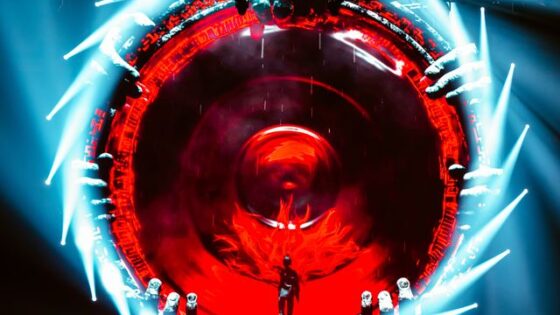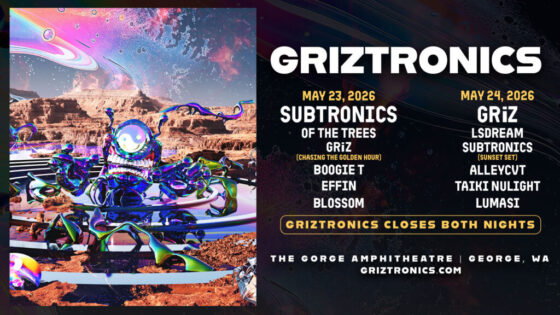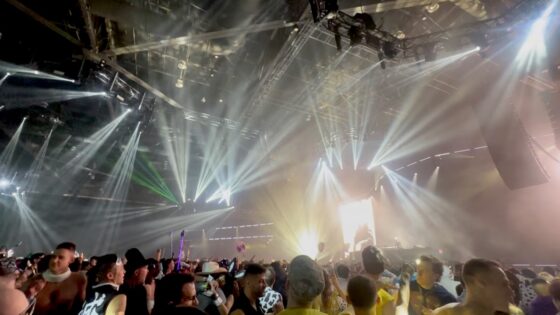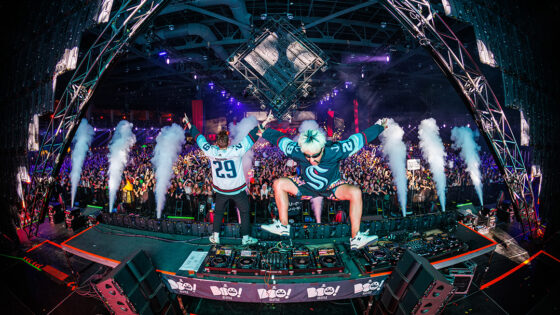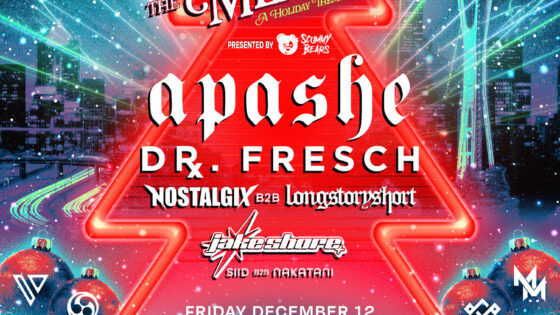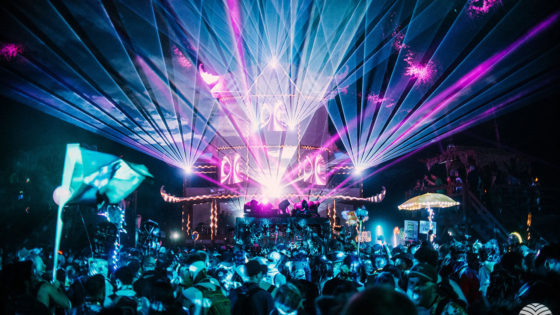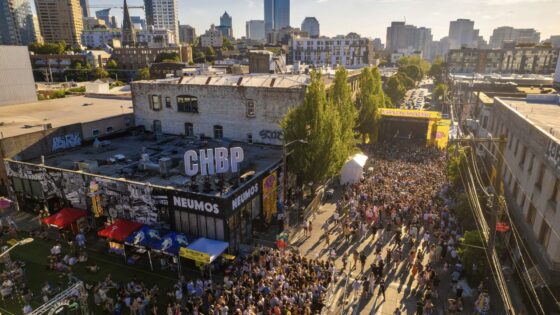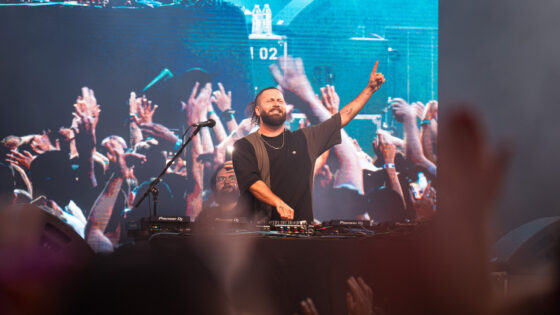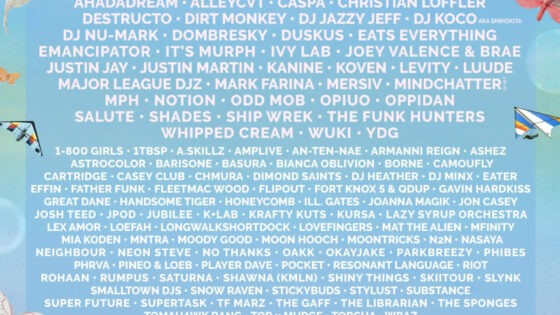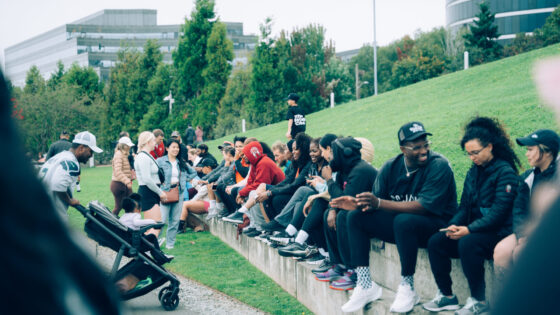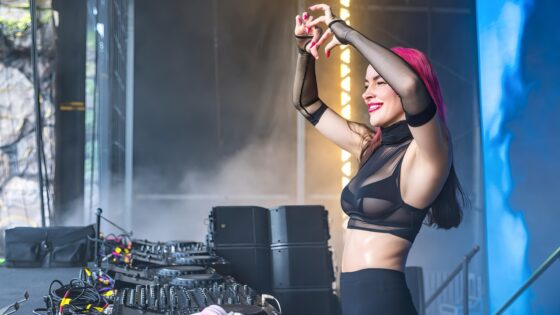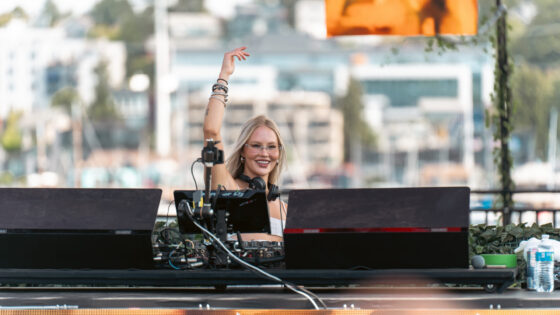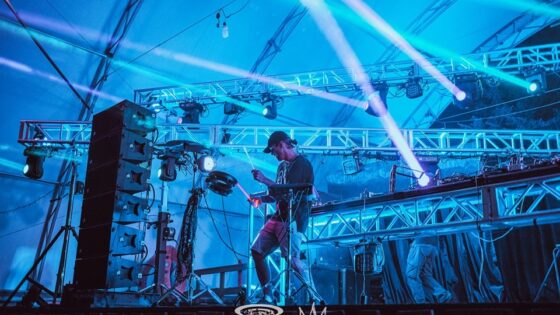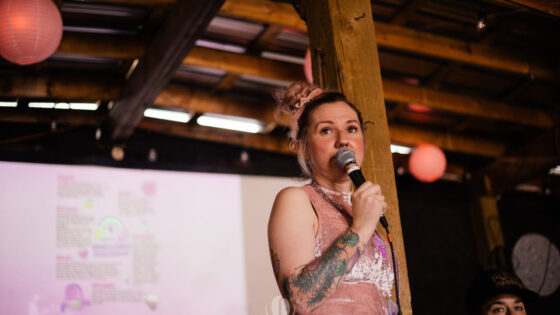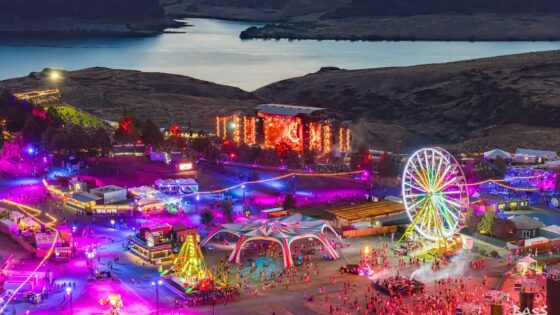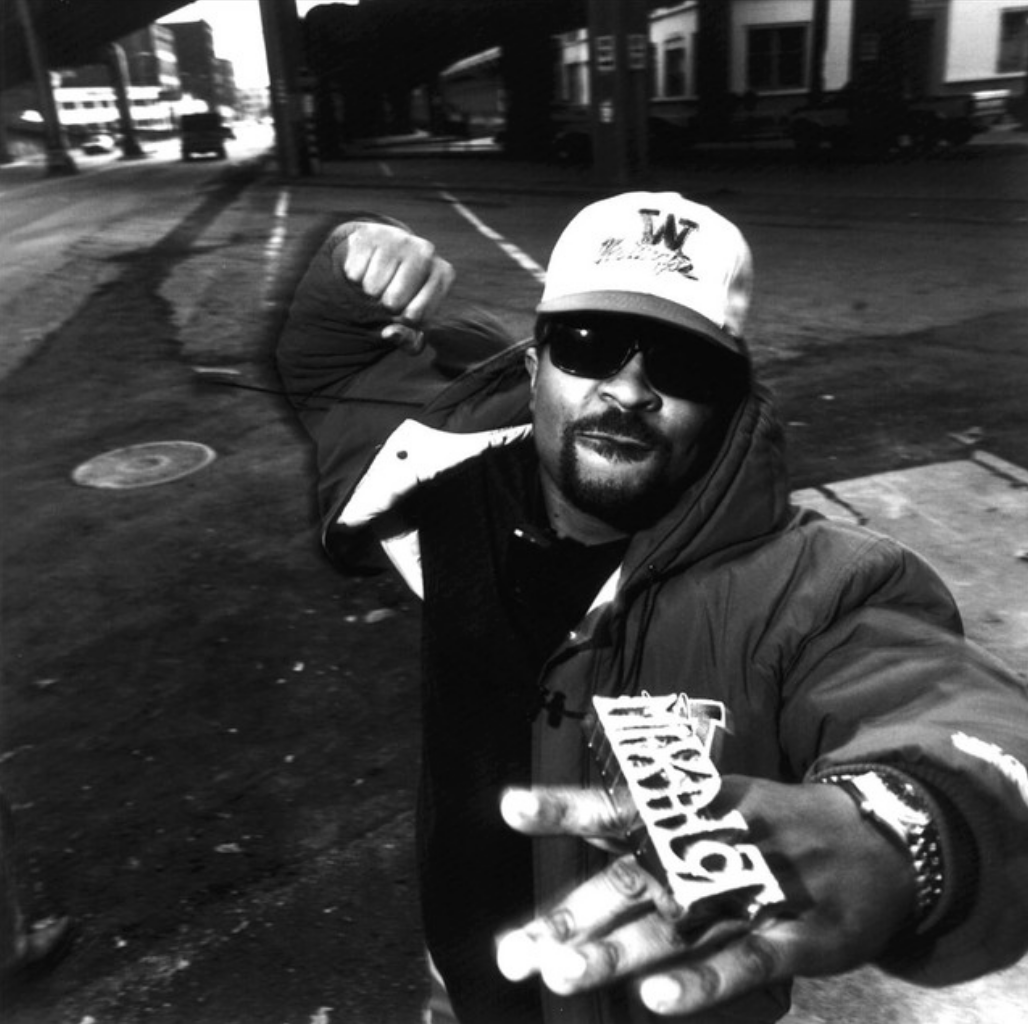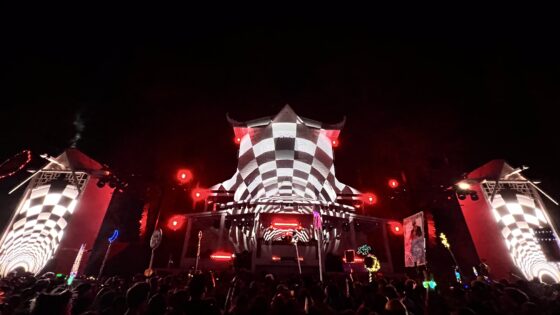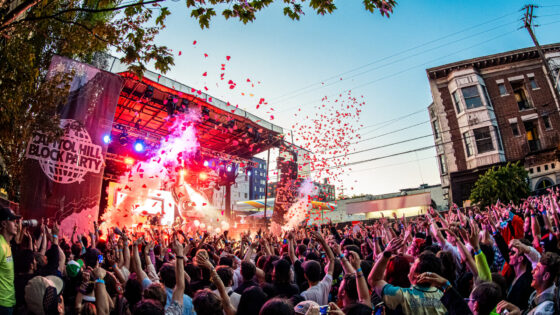The “Seattle Sound” eventually welcomes synth pop
In 1971, the first iteration of what was later named Bumbershoot drew crowds of over 100,000 to Seattle Center’s Festival ’71. The festival reportedly featured laser light shows and the world’s first “electronic jam session.” But these were considered art exhibits – the music performed at Festival ’71 was a mix of folk bands and rock & roll.
Only nine years separated them, but the crowds of Century 21 [World’s Fair] and those of Festival ’71 would have seemed strange to one another. The sixties intervened. Beginning in 1968 with the Sky River Rock Festival and Lighter Than Air Fair, the greatest expression of this creative turmoil in the three years preceding Festival ’71 were the popular music festivals — five of them –which were prudently held out of town — yet within an hour of Seattle — and in natural open theaters where temporary stages could be raised or lowered in a day. (Paul Dorpat)
No one captured the 70s spirit of PNW folk rock better than Heart, the musical duo made up of sisters Ann and Nancy Wilson. Mixing powerful acoustic guitar jams with unforgettable electric riffs, Heart caught fire in Vancouver, BC where Ann wrote the hit Barracuda.
The 70’s also brought punk rock and heavy metal scenes to Seattle. This lead to the explosive impact of grunge when Nirvana signed to Sub Pop in the late 80s. While English New Wave bands like Depeche Mode and and Duran Duran were popularizing electronic music in Europe, Sub Pop successfully marketed Nirvana to UK audiences as distinctly American. With this move Sub Pop simultaneously earned enough fame to define the “Seattle Sound” and offhandedly rejected electronic music.
After a decade of grunge, Sub Pop pivoted in the early 2000s by signing The Shins. This indie rock band presented a Northwest Sound that harkened back to the folk rock of the 70s. The significance? Sub Pop’s shift towards indie rock helped usher in the genre they barred from entry a decade earlier. Synth pop finally arrived in the Pacific Northwest when The Postal Service signed to Sub Pop in 2001.
The PNW indie rock scene continued to flourish with band’s such as Death Cab for Cutie and Modest Mouse. (Death Cab formed in Bellingham, Washington – a concurrent project for The Postal Service drummer, Ben Gibbard. Modest Mouse signed to Sub Pop in the 90s.) To this day, a significant portion of PNW electronic artists are grounded in indie and lo-fi aesthetics associated with this movement.
Experimental hip hop delivers early electronic dance music
In 1978, Seattle Public Schools launched a mandatory bussing program in an effort to desegregate the classroom. Anthony Ray lived in the Central District – near Garfield High School. Instead of attending a school where, prior to bussing, more than half the students were African American, Ray graduated from Roosevelt High School in 1981.
He would soon apply his love for computers and technology — and admiration for the synthesizer-driven New Wave sounds of rock artists like Kraftwerk, Devo, and Gary Numan — and begin forging a unique strain of hip-hop under a new stage name of “Sir Mix-A-Lot.” (Peter Blecha)
Sir Mix-A-Lot’s 1988 debut album, SWASS, eventually went platinum with over 1 million copies shipped. His 1992 track, Baby Got Back, hit number 1 on Billboard’s Hot 100. Employing new tech such as digital drum machines and Moog synthesizers, Sir Mix-A-Lot’s tunes were more than just hip hop. Finally, dance met electronic music in the Pacific Northwest.
After Sir Mix-A-Lot put Seattle on the map for rap, he stayed in town and helped cultivate the PNW hip hop scene. He continued DJing locally, and featured local talent on his radio show, Old Skool Lunch on KUBE 93.3. Acts like Onry Ozzborn and Blue Scholars came up and kept the culture alive – while acts like Macklemore kept Seattle on the map. Then, in 2014, Sub Pop signed their first hip hop act: Shabazz Palaces.
The synthesizers are alien but the drums speak a universal language. It is hip-hop, dub, jazz, R&B, soul, funk, African, experimental, and occasionally even pop. (Sub Pop)
Made up of Palaceer Lazaro (aka rapper/producer Ishmael Butler) and percussionist Tendai Maraire, the duo delivers grounded Afrofuturist beats and ephemeral lyrics. Shabazz Palaces has collaborated with LA-based Flying Lotus and Thundercat, whose experimental jazz performances have become staples in the PNW.
Forerunner Foray immediately ensnares any EDM fan with its syncopated kicks and running computer riffs, before introducing soon-to-be distorted vocal samples. Shabazz palaces, Flying Lotus, and Thundercat all continue to lead the avant-garde with such genre-bending combinations of hip hop and electronic music.
Important things happen in Pacific Northwest nightlife, and DMNW will send you alerts!

